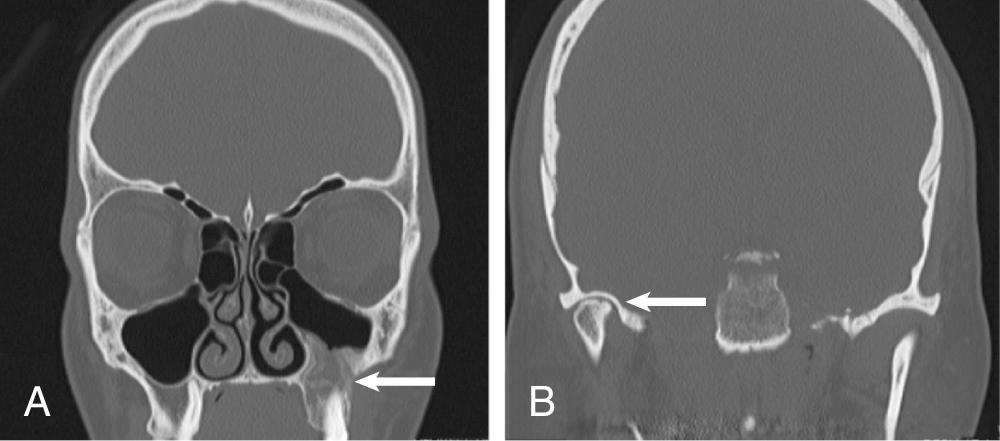Physical Address
304 North Cardinal St.
Dorchester Center, MA 02124
Primary functional endoscopic sinus surgery (FESS) is an effective technique for relieving sinus ostial obstruction, removing osteitic bony partitions, decreasing inflammatory burden, and preparing the nasal cavity for topical medications. The initial surgery represents the greatest chance for long-term success.
Patients who come to medical attention with headache and facial pain without concomitant inflammatory findings should have a workup for non-sinogenic etiologies prior to consideration for surgical intervention.
In patients with primary complaints of headache and facial pain who come for revision surgery, it is advisable to review the computed tomography (CT) scan prior to the first surgical intervention, whenever this is possible. Inflammatory changes seen in patients coming in for revision surgery may be the result of the prior surgical intervention.
Patients with higher levels of mucosal inflammation and neo-osteogenesis are at a greater risk for disease recurrence and the need for multiple surgeries.
The practitioner should maintain a high suspicion for systemic diseases with nasal manifestations, because sinus surgery may result in poor outcomes and worsening symptoms in these cases.
Surgical outcomes may be optimized through meticulous mucosal preservation and with removal of all bony partitions within the sinuses addressed.
Comprehensive postsurgical care with directed debridement, sinonasal irrigations, and appropriate medical therapy is critical to achieving high success rates in surgery.
Complications can, and do, occur in primary and revision FESS. Appropriate preoperative counseling and surgeon preparedness to manage intraoperative and postoperative complications are paramount.
FESS is the most litigated of all ENT surgeries, and appropriate patient expectations and surgeon understanding can help minimize this concern.
Functional endoscopic sinus surgery (FESS) represents an effective therapy in the treatment of chronic rhinosinusitis (CRS), and it carries a high success rate when combined with appropriate medical therapy and postoperative care. As with all therapies, however, a subset of patients will fail primary surgery, even with appropriate continued medical therapy, and will go on to require a subsequent revision procedure. The first surgery represents the patient's greatest chance for long-term success, and thus examination of the causes of failure is critical in reducing the number of patients who remain symptomatic postoperatively. In-depth study of patients undergoing revision surgery offers many clues on how to achieve success with primary FESS. The basis for successful FESS revolves around proper patient selection, comprehensive medical management, and proper surgical technique and perioperative care. This chapter reviews each of these issues in detail.
One important cause of failure for primary FESS results from surgery performed for symptoms misattributed to CRS. Patients may come to medical attention with a constellation of symptoms, including headache and facial pain, which mimics CRS. In the absence of clinical findings of mucosal inflammation, or even in the presence of incidental mucosal inflammation, nonsinogenic etiologies must be considered. Whereas the underlying diagnosis may only come to light after a failed initial attempt at sinus surgery, early recognition is critical to avoid revision surgery and allow for directed therapy toward the true disorder.
It is highly recommended that appropriate expectations be set for headache outcomes prior to performing primary or revision sinus surgery. Headache is a common complaint that is often confused with CRS. Multiple studies have shown that the majority of patients diagnosed with sinusitis in the setting of a normal computed tomography (CT) scan actually meet the International Headache Society criteria for migraine headache. These patients will often respond to medical therapy that includes serotonin receptor agonists (e.g., triptans) or tricyclic antidepressants (e.g., amitriptyline). Surgery should be avoided in these patients, because instrumentation of the mucosa, in the setting of underlying trigeminal hypersensitivity, may lead to a worsening of the primary headache symptoms.
Similarly, patients with odontogenic disease and temporomandibular joint dysfunction can come to medical attention with maxillary or frontal pressure, which may be misdiagnosed as CRS. It is estimated that approximately 6% of chronic rhinosinusitis is of dental origin. Careful review of the CT helps delineate this group by the presence of periapical abscesses and often with degenerative changes of the temporomandibular joint ( Fig. 45.1 ). Even when odontogenic infections coexist with or precipitate CRS, recognition of the dental process is critical, because symptoms may recur following sinus surgery unless the tooth is addressed. Subtle irregularities may be missed on dental x-ray and seen on sinus CT, and in certain cases, referral to an endodontist may be required.

Postnasal drip represents another common presenting symptom that may overlap with the CRS spectrum of symptoms. In the setting of minimal disease on exam, however, other causes should be interrogated prior to inferring a sinogenic etiology. Wise and colleagues found that patients with postnasal drip were likely to have pathologic reflux at the level of the nasopharynx. Even when true CRS is present, acid reflux has been independently shown to correlate with a worse prognosis following FESS, suggesting that it should be concomitantly managed. One potential mechanism is thought to involve irritation and mucociliary impairment from both acid and pepsin, because the sinonasal mucosa lacks an innate protective mechanism against exposure to gastric contents. Alternatively, reflex stimulation of upper airway mucus production appears to occur in the setting of gastroesophageal reflux, even when pH is normal. In general, postnasal discharge is the symptom that takes longest to resolve following sinus surgery, and it resolves less well than a number of other symptoms.
Ear symptoms associated with CRS, specifically ear fullness or pressure, are another of the challenging symptoms. Mechanisms and pathophysiology of eustachian tube dysfunction have been elusive, and often treatment and resolution of sinus inflammation do not completely eradicate bothersome ear symptoms.
Become a Clinical Tree membership for Full access and enjoy Unlimited articles
If you are a member. Log in here